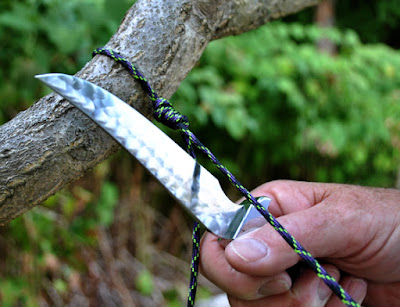 |
| The script W seems new, but the jewelling is a Warther trademark |
I’m not a huge fan of Warther knives. While they make kitchen knives, custom folders, fixed blades and letter openers, it seemed they were stuck in the past making the same production knives year after year.
This is also tempered by a story my Yee Sing Kung-Fu instructor, Les, told me.
It seems he ordered a knife from Mooney Warther. It was just an ordinary folder, but they would incorporate a silver dollar as a bolster in your knife. Les wanted one with his birth date on it. After waiting a significant amount of time the knife was ready and Les had his father drive him to Dover, OH to pick up the knife.
As Les told the story, in the year since they agreed on a price, placed the order and placed a deposit, the price of silver rose quite a bit. Mooney didn’t want to honor the original price. Les stood his ground and got the knife for the original price, but what kind of adult tries to jack a kid up for a few more dollars?
That was Les’s side of the story and the impression a 12-year-old has about a business transaction can be flawed. Still, that story has always left a sour taste in my mouth.
But this year (2016) Warther Cutlery has released their first production hunting knife. So I bought one. What’s really noticeable is the jewelling Warther does to their blade. It is great branding. When I look through old kitchen cutlery, I just need to look for the jewelling.
I’m kind of entranced by their first production hunting knife. The 5-inch blade is made of CPM S30V steel for the steel junkies. I don’t follow steels very much, but so many of my folders use this steel and I like the way they cut and resharpen. The Warther handle is G-10 and it sports stainless steel bolsters. I like stainless steel because it doesn’t react with the fatty acids in processed leather like copper or brass to form green goo.
I also admit the knife is part investment. There always seems to be a market for Warther knives, at least in Northeast Ohio.
Should you buy one? I don’t know, but I suspect it would make a great present to the outdoorsman in your life.
 |
| It makes a great general camp knife as well |

